Get to grips with the LangChain framework from theory to deployment and develop production-ready applications.
Code examples regularly updated on GitHub to keep you abreast of the latest LangChain developments.
Purchase of the print or Kindle book includes a free PDF eBook.
Key Features
- Learn how to leverage LLMs’ capabilities and work around their inherent weaknesses
- Delve into the realm of LLMs with LangChain and go on an in-depth exploration of their fundamentals, ethical dimensions, and application challenges
- Get better at using ChatGPT and GPT models, from heuristics and training to scalable deployment, empowering you to transform ideas into reality
Book Description
ChatGPT and the GPT models by OpenAI have brought about a revolution not only in how we write and research but also in how we can process information. This book discusses the functioning, capabilities, and limitations of LLMs underlying chat systems, including ChatGPT and Bard. It also demonstrates, in a series of practical examples, how to use the LangChain framework to build production-ready and responsive LLM applications for tasks ranging from customer support to software development assistance and data analysis – illustrating the expansive utility of LLMs in real-world applications.
Unlock the full potential of LLMs within your projects as you navigate through guidance on fine-tuning, prompt engineering, and best practices for deployment and monitoring in production environments. Whether you’re building creative writing tools, developing sophisticated chatbots, or crafting cutting-edge software development aids, this book will be your roadmap to mastering the transformative power of generative AI with confidence and creativity.
What you will learn
- Understand LLMs, their strengths and limitations
- Grasp generative AI fundamentals and industry trends
- Create LLM apps with LangChain like question-answering systems and chatbots
- Understand transformer models and attention mechanisms
- Automate data analysis and visualization using pandas and Python
- Grasp prompt engineering to improve performance
- Fine-tune LLMs and get to know the tools to unleash their power
- Deploy LLMs as a service with LangChain and apply evaluation strategies
- Privately interact with documents using open-source LLMs to prevent data leaks
Who this book is for
The book is for developers, researchers, and anyone interested in learning more about LLMs. Whether you are a beginner or an experienced developer, this book will serve as a valuable resource if you want to get the most out of LLMs and are looking to stay ahead of the curve in the LLMs and LangChain arena.
Basic knowledge of Python is a prerequisite, while some prior exposure to machine learning will help you follow along more easily.
Table of Contents
- What Is Generative AI?
- LangChain for LLM Apps
- Getting Started with LangChain
- Building Capable Assistants
- Building a Chatbot like ChatGPT
- Developing Software with Generative AI
- LLMs for Data Science
- Customizing LLMs and Their Output
- Generative AI in Production
- The Future of Generative Models

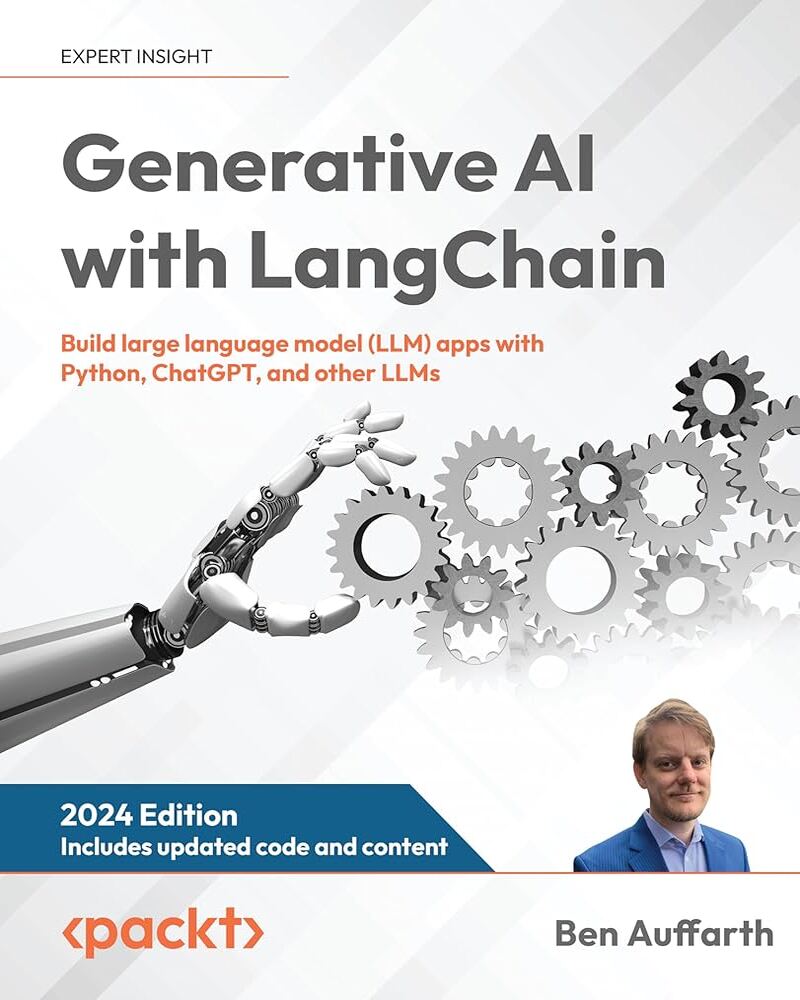
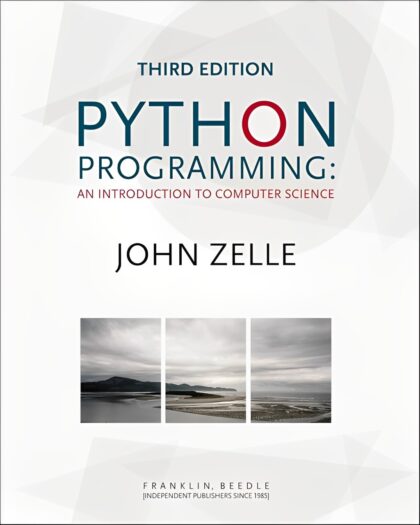
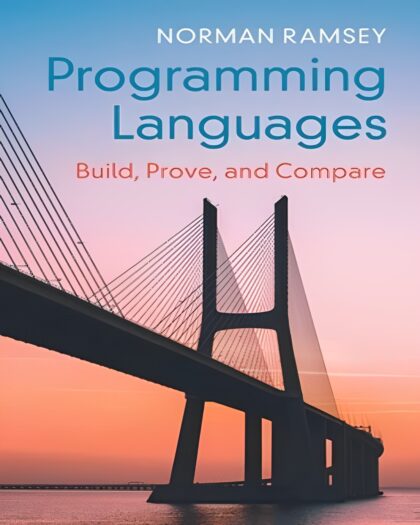
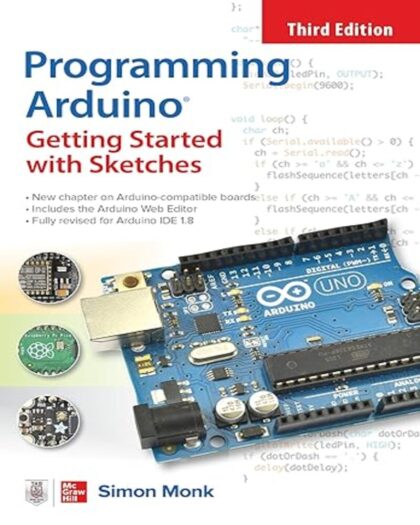

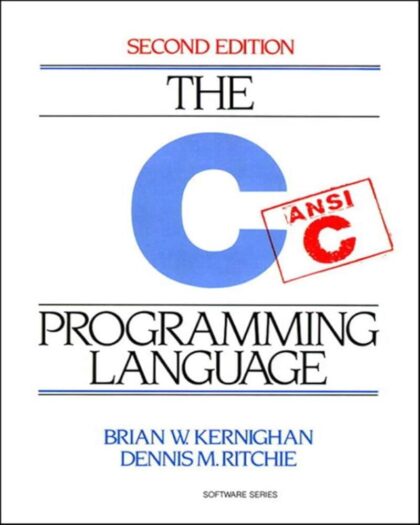
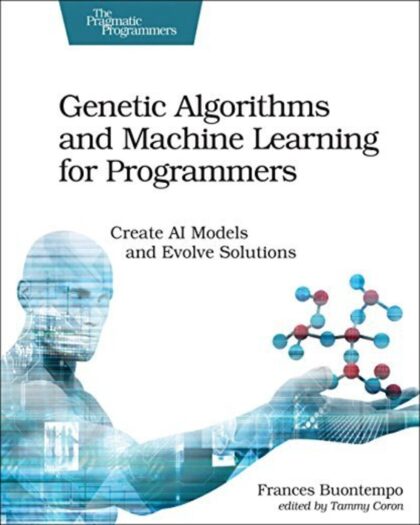
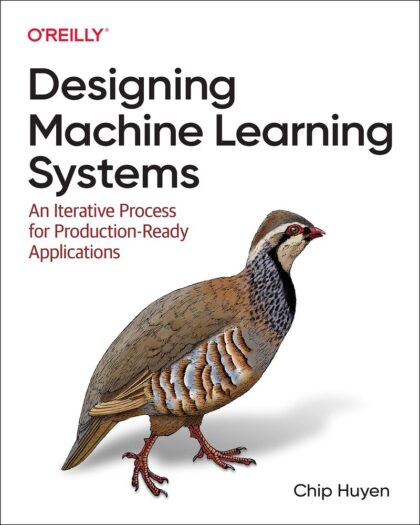
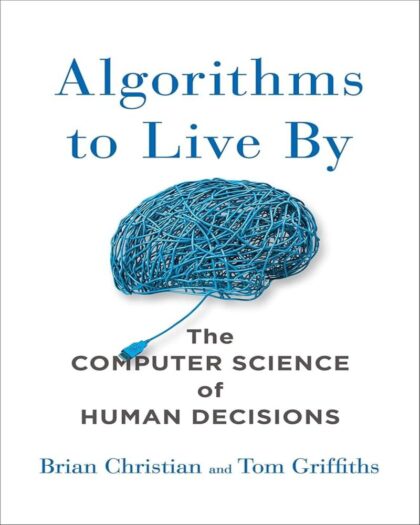
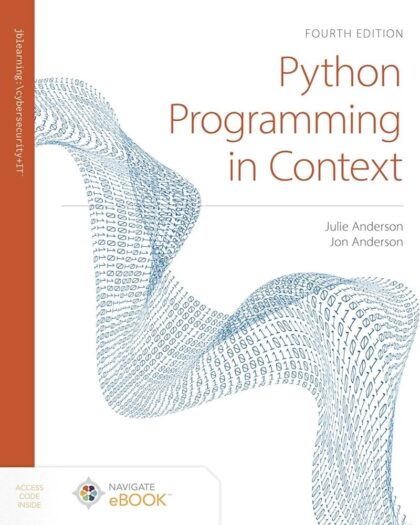
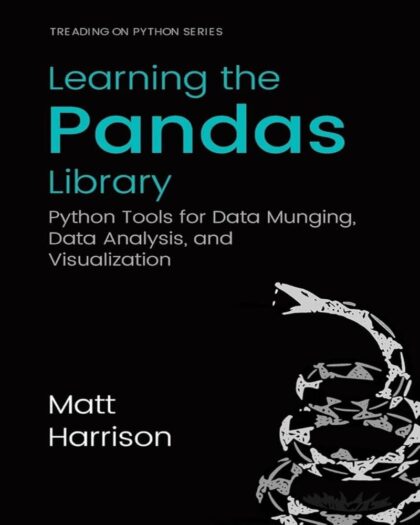
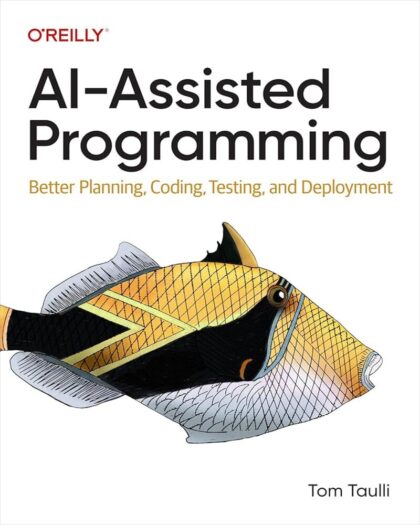
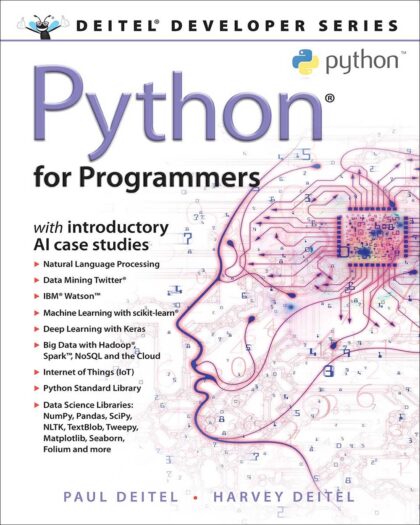
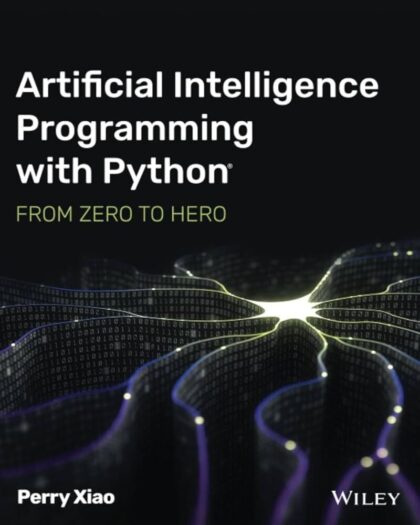
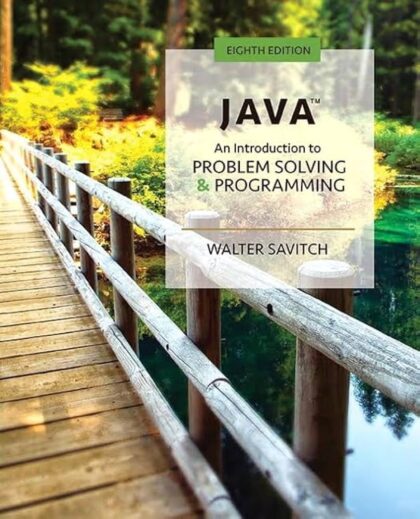
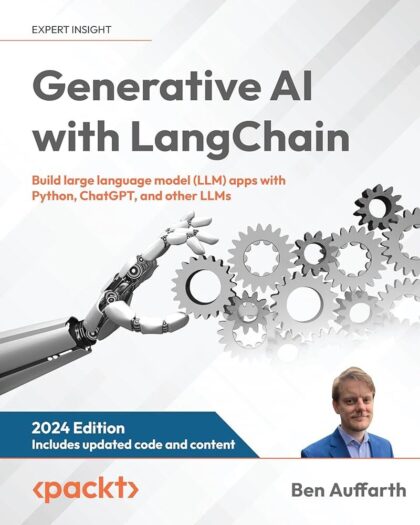
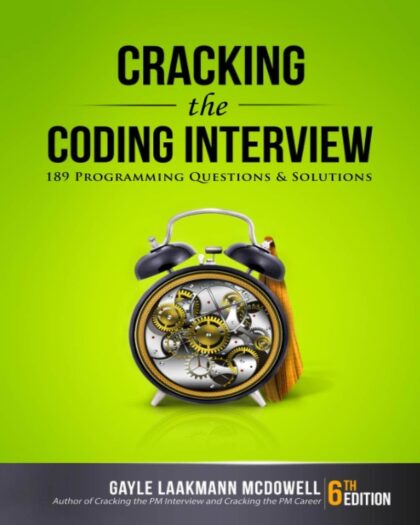
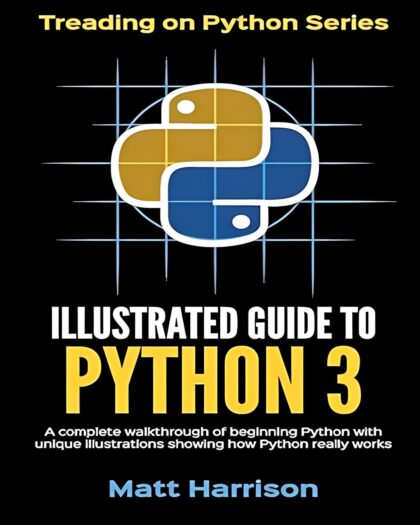
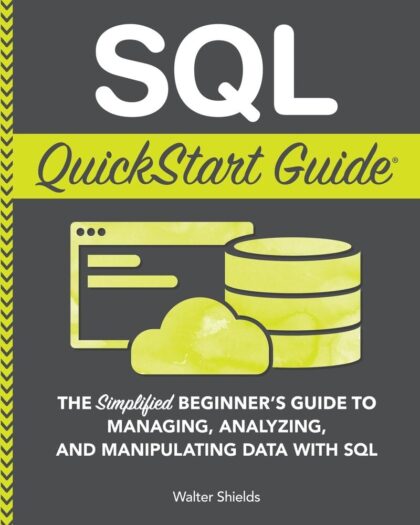
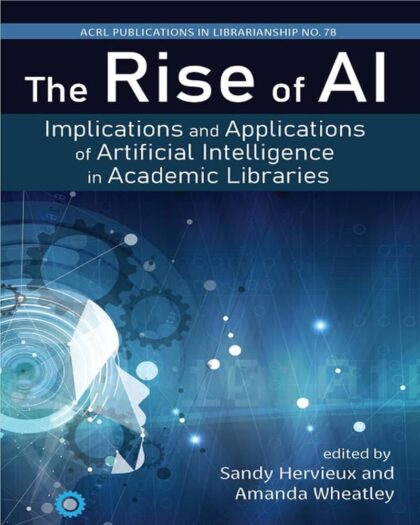

With insights into LLM customization techniques, and deployment strategies, the book offers a roadmap for harnessing Langchain's potential in the Gen AI landscape.
The book demystifies key LangChain developments by abstracting LLM complexities while empowering readers with advanced customization options. From fundamental concepts to intricate techniques like agents and chains, Auffarth equips readers with the tools necessary to enhance applications and navigate production deployment effectively.
What sets this book apart is its multifaceted approach, bridging theory with hands-on examples across diverse domains like information extraction and chatbots. By combining conceptual foundations with real-world implementations, Auffarth ensures readers gain not only a deep understanding of LangChain but also the skills to tailor it to their specific applications.
"Generative AI with LangChain" stands out among existing resources by offering a comprehensive, well-rounded exploration of LangChain's capabilities. Auffarth's expertise shines through in his intuitive explanations and applied case studies, making this book an invaluable resource for anyone looking to harness the power of language models in their projects.
If you are already familiar with many of the basics of LLMs, then this is a good next step to learn how to turn them into useful applications that can be deployed.
Auffarth does an exceptional job of breaking down complex concepts into digestible content, making it accessible to both beginners and experienced developers. The book starts with an introduction to LLMs and their legal implications, before delving into the intricacies of transformer models and different attention mechanisms.
One of the standout features of this book is its practical approach. The author guides readers on how to use the LangChain framework to implement production-ready applications, such as agents and personal assistants. The book also provides insights into integrating these applications with other tools such as web searches and code execution. The book also covers the critical process of training and fine-tuning LLMs, providing readers with a comprehensive understanding of data-driven decision-making, automated analysis, and visualization using familiar libraries like pandas.
By the end of this book, I feel like I not only have a deep understanding of LLMs but am also equipped with the knowledge to build and deploy actual applications using the LangChain framework. The book is a must-read for developers, researchers, and anyone interested in staying ahead of the curve in the LLMs and LangChain arena. We'll see how long the concepts stand the test of time in this rapidly evolving field, but there is no doubt that the book's blend of theoretical knowledge and practical application makes it a valuable addition to any tech enthusiast's library.
Cheers!
HGB 💥🐎🎶
But it is more than just a "How to use Langchain" book. It explains what LLMs and GPTs are, how they work, how they are trained, and how they are conditioned, so when you get to the Langchain part of the book, you have a bigger arsenal of tools to chain together to do your bidding correctly instead of poking at random things with a stick.
Essentially, Langchain is a tool to create a generative AI pipeline that can connect to various AI models, load documents, and store those documents for use by the models so tailor them to your use case and the last 80% of the book covers how to do this. So if you ever wanted to create your own AI agents and chatbots that can use the features of existing models like GPT-4 but customized for your own use, this is this book for you.
- The difficulty of providing precise instructions within specific contexts, which I found to be the most challenging and crucial aspect.
- Switching between different LLM models with minimal programming effort.
- Selectively saving chat history in memory.
- Handling data efficiently, including managing input data of various modalities and making output data accessible.
In overcoming these obstacles, I came across LangChain, a robust toolkit designed for LLM application development. The book "Generative AI with LangChain" by Ben Auffarth provides a comprehensive overview, covering the basics of LLM, LangChain, and its key components (chains, agents, memory, tools). The book also explores sample applications such as chatbots, customization of LLM models (conditioning, fine-tuning), and the deployment of LLM apps into production. Unlike theoretical research materials, this book serves as a practical, one-stop resource for understanding the current landscape of LLM applications.
Some of the interesting points:
- LangChain helps standardize prompts by providing prompt templates (LangChain Expression Language).
- LangChain provides extensive integrations to other model APIs including Fake LLM, OpenAI, Hugging Face, GCP, Jina AI, Replicate, etc.
- LangChain has "memory" which allows the model to be context-aware.
- LangChain supports advanced data facilities such as map-reduce approach and output parser.
This book has significantly saved me time, providing consolidated information without the need for extensive online searches or inquiries to ChatGPT. For those unsure about its content, I recommend checking out the free sample on Amazon – it's undoubtedly worth every penny.